Blog
Welcome to Heaven And Homes
We make your home as unique and beautiful as the people living in it.

Avoid costly mistakes. Get guidance from a design expert.
A Detailed Guide to Sustainable Furniture Uk
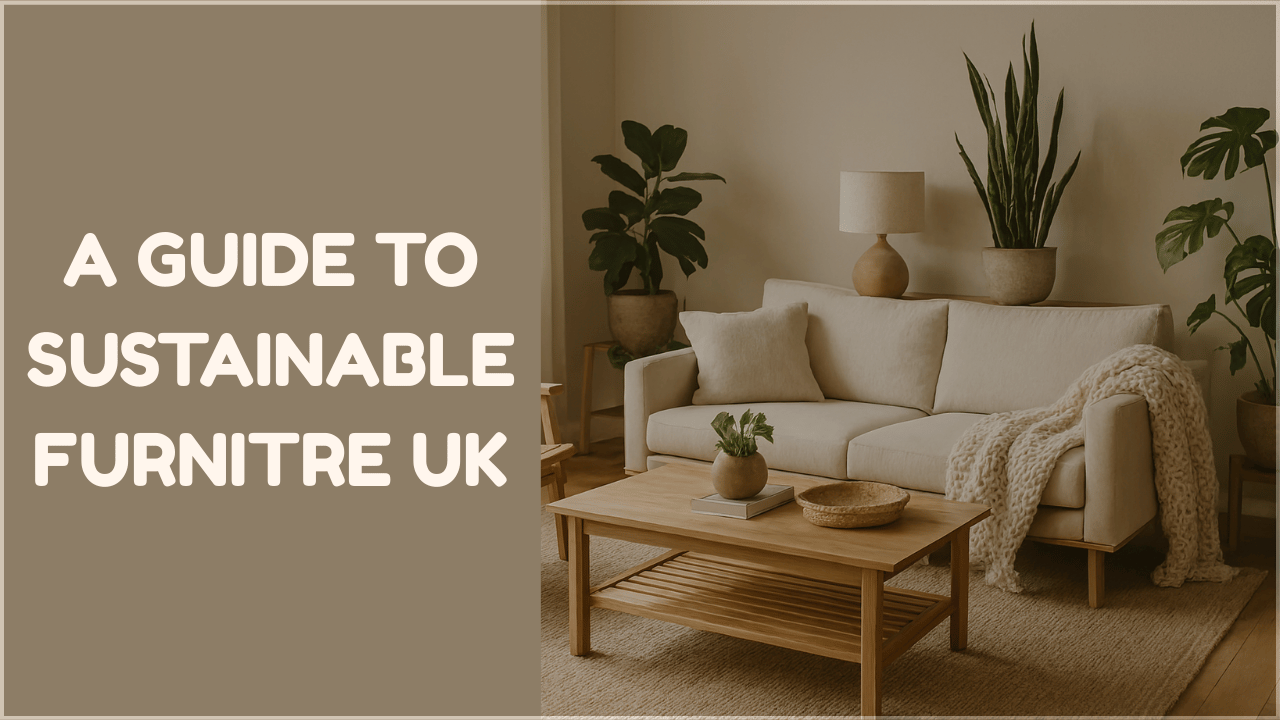
Table of Contents
Introduction to Sustainable Furniture
In an era of increasing environmental awareness, the concept of sustainable furniture has moved from a niche concern to a mainstream imperative. Consumers are increasingly seeking out products that not only meet their aesthetic and functional needs but also align with their values of environmental responsibility and ethical production.
Sustainable furniture UK is designed, manufactured, and distributed with minimal negative impact on the environment and society. This comprehensive guide explores the principles, materials, and benefits of sustainable furniture, offering insights into how to make eco-conscious choices for your home.
We will delve into what makes furniture sustainable, the key materials to look for, and how to contribute to a more circular economy through your purchasing decisions.
What Makes Furniture Sustainable?
Sustainable furniture encompasses a broad range of practices and considerations throughout its entire lifecycle, from raw material extraction to end-of-life disposal. Key aspects include:
- Sourcing of Materials: Prioritizing materials that are renewable, recycled, reclaimed, or have a low environmental footprint. This includes wood from sustainably managed forests, recycled metals, natural fibers, and rapidly renewable resources like bamboo.
- Manufacturing Processes: Employing production methods that minimize energy consumption, reduce waste, and avoid harmful chemicals. This involves efficient use of resources, responsible waste management, and lower emissions.
- Durability and Longevity: Designing and building furniture to last, reducing the need for frequent replacements. Durable furniture minimizes waste and resource depletion associated with new production.
- Non-Toxic Finishes and Adhesives: Using low-VOC (Volatile Organic Compound) or zero-VOC finishes, glues, and paints to ensure better indoor air quality and reduce chemical exposure.
- Ethical Labor Practices: Ensuring fair wages, safe working conditions, and respect for human rights throughout the supply chain. This includes avoiding child labor and exploitative practices.
- Packaging and Transportation: Minimizing packaging waste, using recycled or recyclable packaging materials, and optimizing logistics to reduce carbon emissions during transport.
- End-of-Life Management: Designing furniture for disassembly, repair, reuse, and recycling. This supports a circular economy model where materials are kept in use for as long as possible.
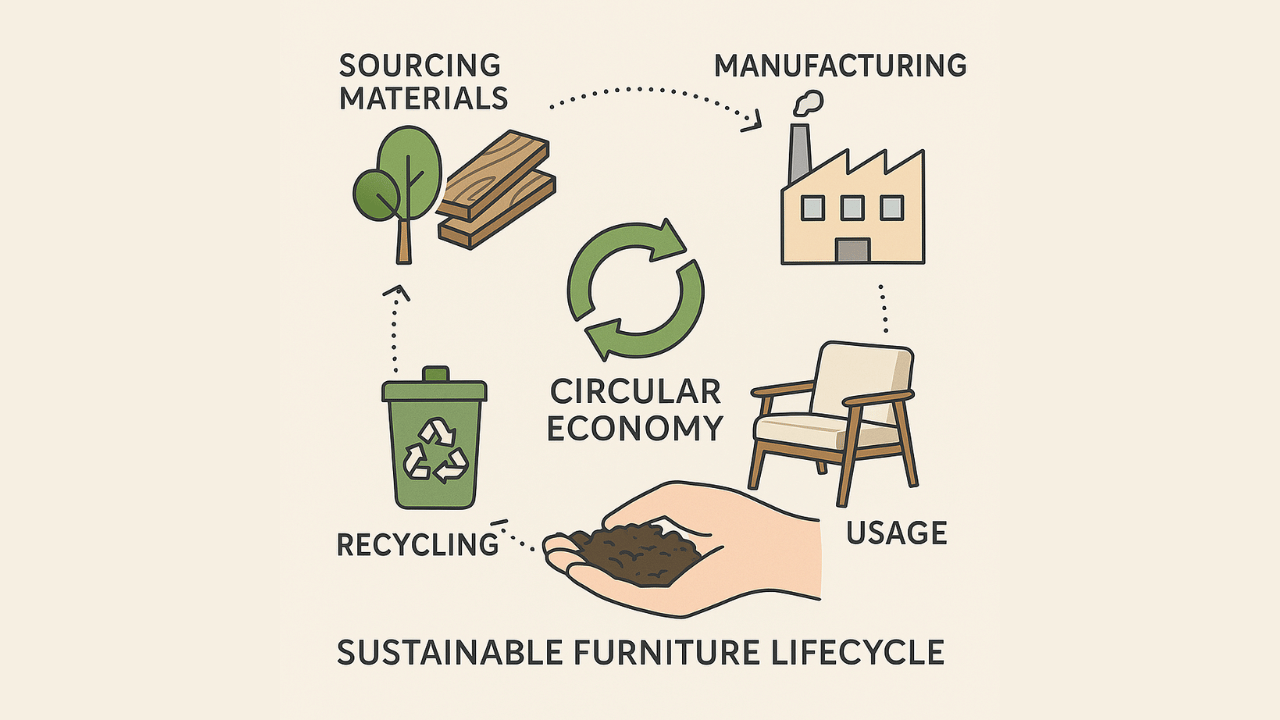
By considering these factors, consumers can make informed decisions that support a more sustainable and responsible furniture industry.
Key Sustainable Materials in Furniture
The choice of materials is fundamental to the sustainability of furniture. Here are some of the most common and eco-friendly options:
- FSC-Certified Wood: The Forest Stewardship Council (FSC) certification ensures that wood products come from responsibly managed forests that provide environmental, social, and economic benefits. Look for this label when purchasing wooden furniture.
- Recycled and Reclaimed Wood: Using wood salvaged from old buildings, barns, or other structures reduces demand for new timber and prevents valuable resources from going to landfill. Each piece often has a unique character and history.
- Bamboo: A rapidly renewable grass that grows quickly without pesticides or fertilizers. It is incredibly strong, durable, and versatile, making it an excellent alternative to traditional hardwoods.
- Recycled Metal: Steel, aluminum, and other metals can be recycled repeatedly without losing their properties. Using recycled metal significantly reduces the energy consumption and environmental impact associated with mining and processing virgin materials.
- Recycled Plastic: Post-consumer plastics can be transformed into durable and innovative furniture pieces, diverting waste from landfills and oceans. Examples include outdoor furniture and some interior accents.
- Natural Fibers: Organic cotton, linen, hemp, and jute are excellent choices for upholstery. They are biodegradable, often require less water and fewer pesticides to grow than conventional crops, and offer a soft, breathable feel.
- Wool: A natural, renewable, and biodegradable fiber that is durable, flame-resistant, and provides excellent insulation. Often used for upholstery and rugs.
- Cork: Harvested from the bark of cork oak trees without harming the tree, cork is renewable, lightweight, water-resistant, and naturally antimicrobial. It’s used for tabletops, flooring, and decorative elements.
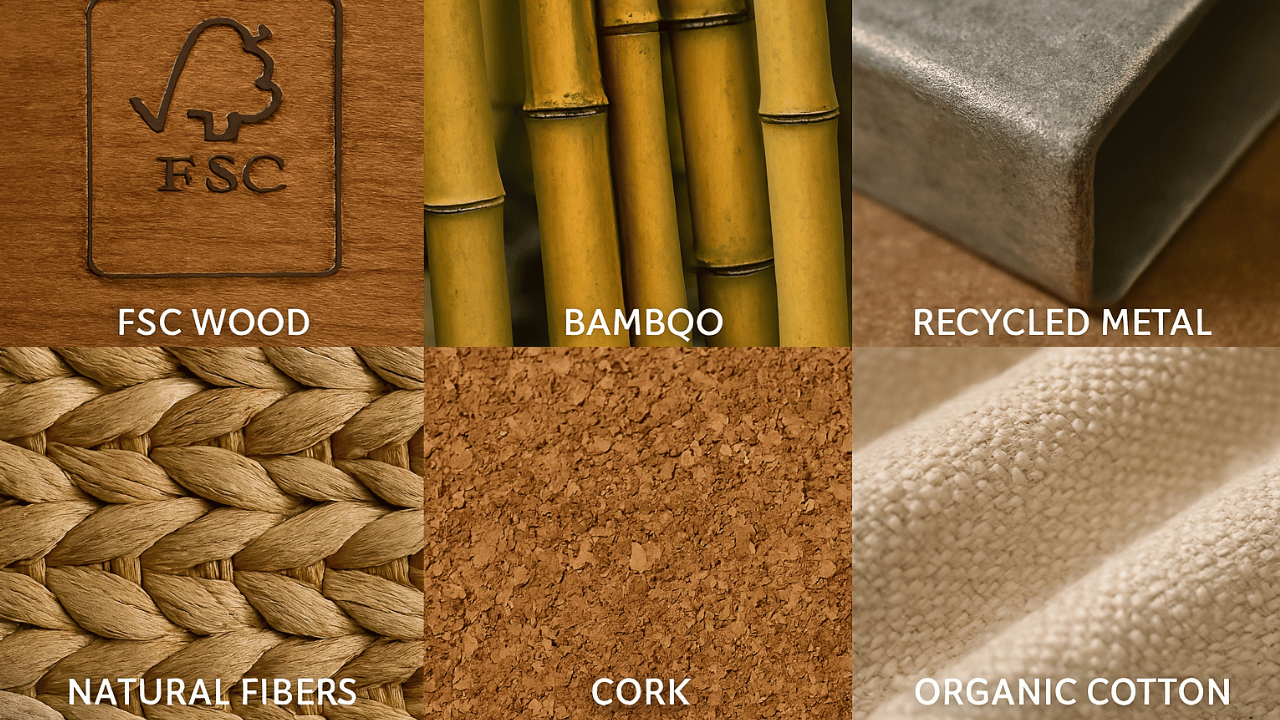
Understanding these materials empowers consumers to choose furniture that is both beautiful and environmentally responsible.
The Benefits of Choosing Sustainable Furniture
Opting for sustainable furniture offers a multitude of benefits, extending beyond environmental protection to positively impact your health, finances, and community.
- Environmental Protection: Reduces deforestation, minimizes waste, conserves natural resources, and lowers carbon emissions associated with manufacturing and transportation. It helps combat climate change and preserve biodiversity.
- Improved Indoor Air Quality: Sustainable furniture often uses non-toxic finishes, glues, and fabrics, which means fewer harmful VOCs are released into your home. This leads to better indoor air quality, reducing risks of respiratory issues, allergies, and other health problems.
- Durability and Longevity: Eco-friendly furniture is typically built with higher quality materials and craftsmanship, designed to last for many years. This means you won’t need to replace pieces as frequently, saving money in the long run and reducing consumption.
- Ethical Production: Many sustainable brands prioritize fair labor practices, ensuring that workers involved in the production process are treated ethically, paid fair wages, and work in safe conditions. This supports social responsibility and human rights.
- Unique Aesthetic: Reclaimed wood and recycled materials often have a unique character and story, adding a distinctive aesthetic to your home that cannot be replicated by mass-produced items.
- Support for Responsible Businesses: By purchasing sustainable furniture, you support companies committed to ethical and environmentally sound practices, encouraging the growth of a more responsible industry.
- Contribution to a Circular Economy: Choosing furniture designed for repair, reuse, and recycling helps close the loop on material consumption, moving away from a lineartake-make-dispose model.
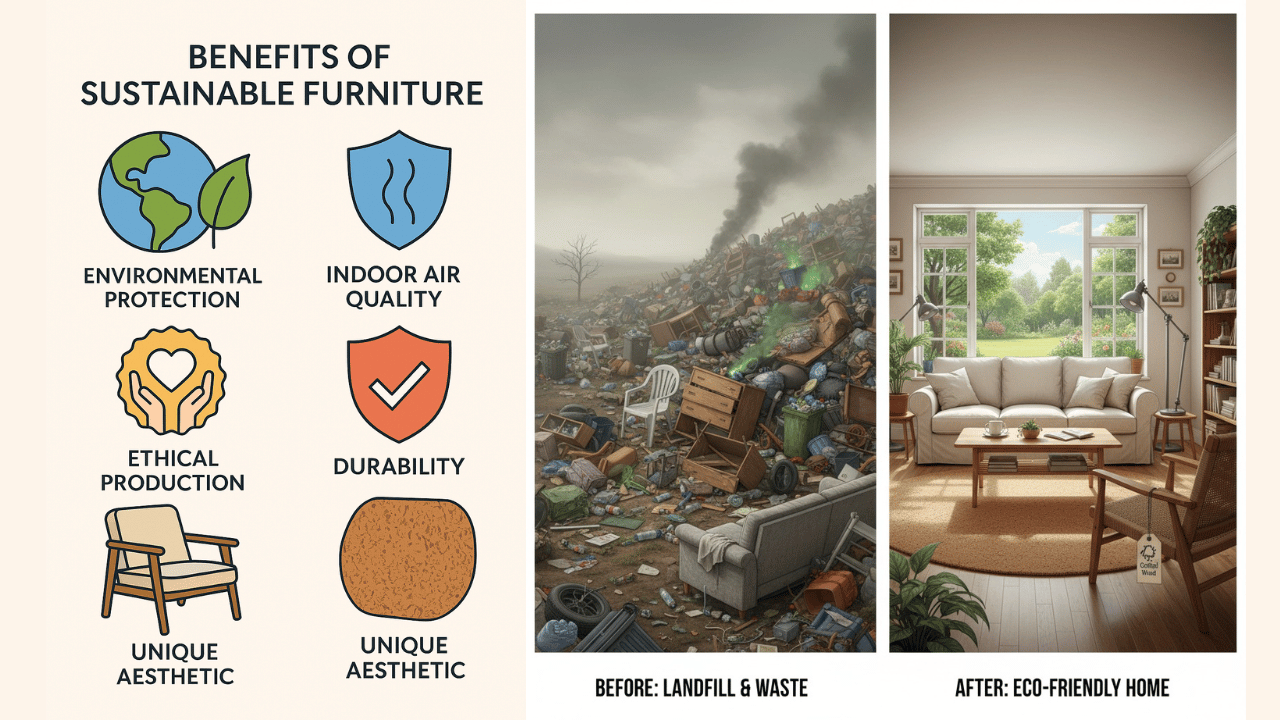
By embracing sustainable furniture, you are not just furnishing your home; you are making a conscious choice to support a healthier planet and a more equitable society.
How to Identify Sustainable Furniture
Navigating the market for sustainable furniture can be challenging, but several indicators and certifications can help you make informed choices:
- Certifications and Labels: Look for reputable third-party certifications that verify sustainable practices:
- FSC (Forest Stewardship Council): Guarantees wood comes from responsibly managed forests.
- GREENGUARD Certification: Indicates products meet strict chemical emissions limits, contributing to healthier indoor air.
- Oeko-Tex Standard 100: Certifies textiles are free from harmful substances.
- GOTS (Global Organic Textile Standard): For organic fibers, ensuring environmental and social criteria are met throughout the supply chain.
2. Material Transparency: Reputable brands will be transparent about their material sourcing and manufacturing processes. They should be able to tell you where their materials come from and how their products are made.
3. Company Values and Mission: Research the company’s commitment to sustainability. Do they have a clear environmental policy? Are they involved in community initiatives? Do they publish sustainability reports?
4. Durability and Warranty: Sustainable furniture is built to last. Look for robust construction, quality joinery, and inquire about warranties. A longer warranty often indicates confidence in the product’s longevity.
5. Modular and Repairable Design: Furniture designed to be easily disassembled, repaired, or have components replaced extends its lifespan and reduces waste.
6. Local Production: Buying from local manufacturers can reduce the carbon footprint associated with transportation and often supports local economies and craftsmanship.
7. End-of-Life Options: Consider if the furniture can be easily recycled, composted, or repurposed at the end of its useful life. Some companies offer take-back programs.
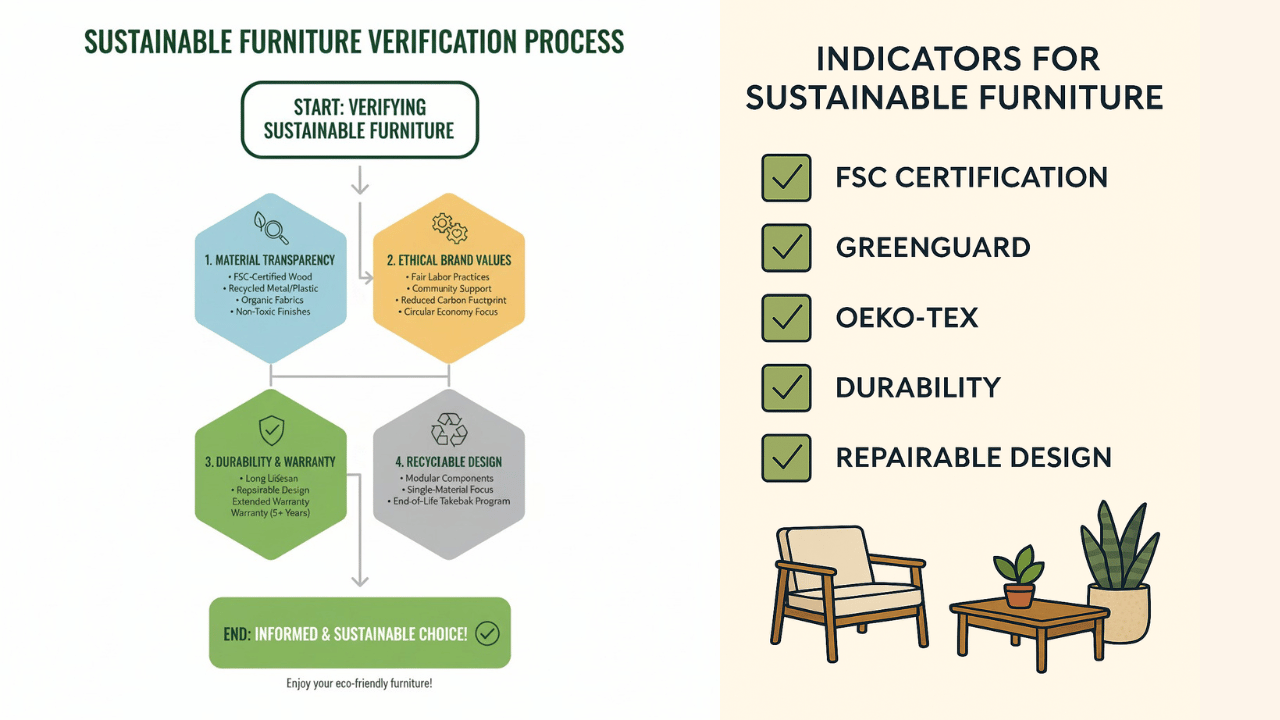
By being a discerning consumer and asking the right questions, you can confidently identify and invest in truly sustainable furniture that aligns with your values.
Sustainable Furniture for Different Rooms
Sustainable furniture can be integrated into every room of your home, offering eco-friendly solutions without compromising on style or comfort.
- Living Room: Opt for sofas and armchairs with frames made from FSC-certified wood and upholstered in organic cotton, linen, or recycled fabrics. Coffee tables and side tables can be made from reclaimed wood or recycled metal. Look for rugs made from natural fibers like jute or wool.
- Bedroom: Choose bed frames made from sustainable wood or bamboo. Mattresses can be made with natural latex, organic cotton, or wool, avoiding harmful chemicals. Wardrobes and chest of drawers from reclaimed or FSC-certified wood. Organic bedding completes the sustainable sleep sanctuary.
- Dining Room: Dining tables and chairs crafted from solid, sustainably sourced wood are excellent choices. Consider benches made from recycled materials or chairs with natural fiber seats. Look for non-toxic finishes on all dining furniture.
- Home Office: Desks and shelving units made from recycled or FSC-certified wood. Ergonomic chairs with recycled content and durable, non-toxic upholstery. Natural light and plants can further enhance the sustainability of your workspace.
- Outdoor Furniture: Durable outdoor furniture made from recycled plastic, reclaimed wood, or sustainably harvested teak. These materials are designed to withstand the elements while minimizing environmental impact.
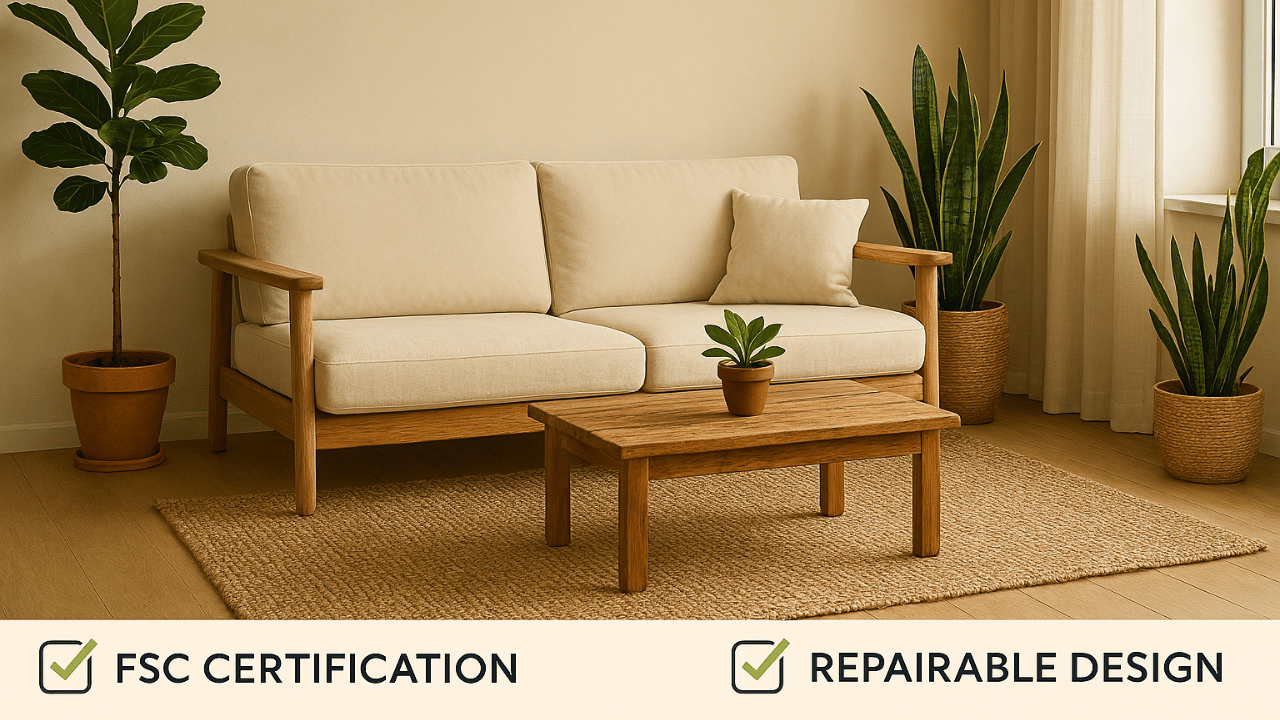
Integrating sustainable furniture throughout your home creates a cohesive and healthy living environment that reflects your commitment to a greener lifestyle.
The Circular Economy and Furniture
The concept of a circular economy is gaining traction in the furniture industry as a way to move beyond the traditional linear take-make-dispose model. Instead of products being used and then discarded, a circular economy aims to keep resources in use for as long as possible, extract the maximum value from them whilst in use, then recover and regenerate products and materials at the end of each service life.
Key principles of a circular economy in furniture include:
- Design for Longevity: Creating durable, timeless pieces that are built to last, reducing the need for frequent replacements.
- Design for Disassembly: Designing furniture so that components can be easily separated, repaired, or replaced, facilitating maintenance and end-of-life recycling.
- Use of Recycled and Renewable Materials: Incorporating materials that can be regenerated or have already been through a use cycle.
- Repair and Maintenance: Encouraging consumers to repair and maintain their furniture to extend its lifespan.
- Reuse and Resale: Facilitating the resale or donation of furniture to new owners, keeping it in use longer.
- Recycling: Ensuring that materials can be effectively recycled into new products at the end of the furniture’s life.
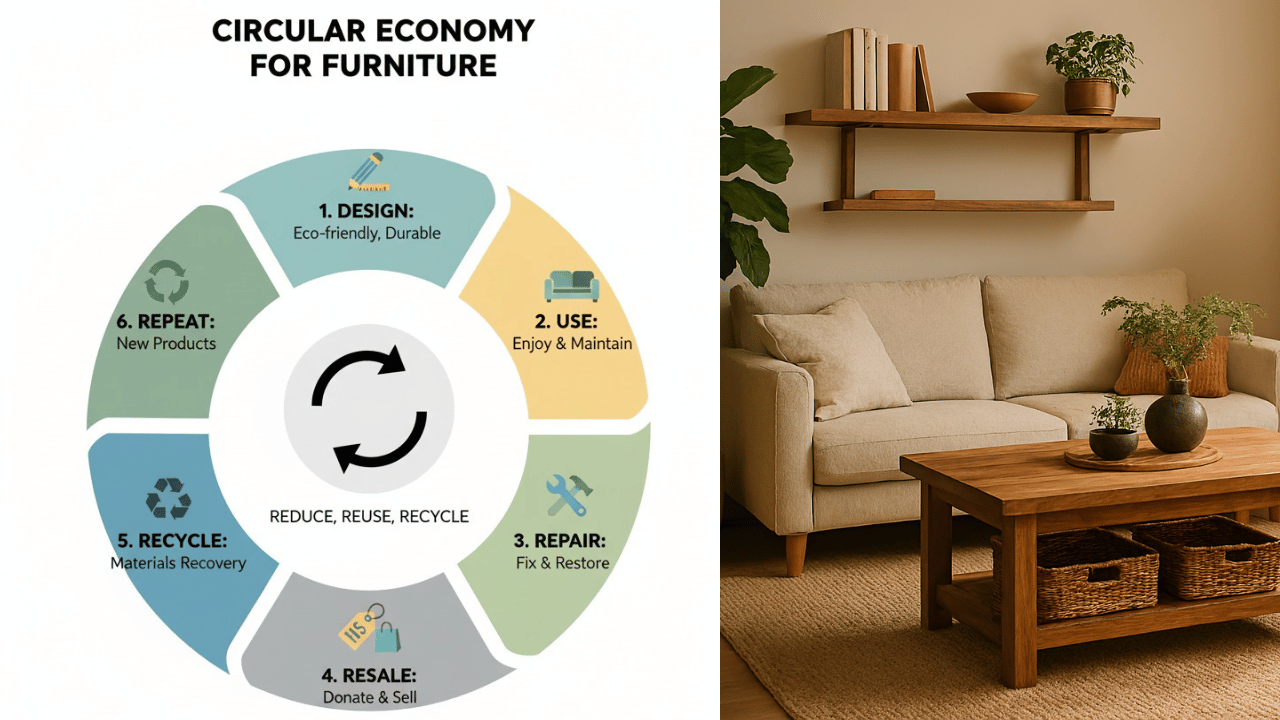
Many furniture brands are now adopting circular economy principles, offering take-back programs, repair services, and designing products with future recycling in mind. As a consumer, supporting these initiatives contributes to a more sustainable and resource-efficient future.
Conclusion
Sustainable furniture is a vital component of a responsible and eco-conscious lifestyle. By understanding the principles of sustainability, recognizing key eco-friendly materials, and supporting brands committed to ethical practices, consumers can make informed choices that benefit both their homes and the planet.
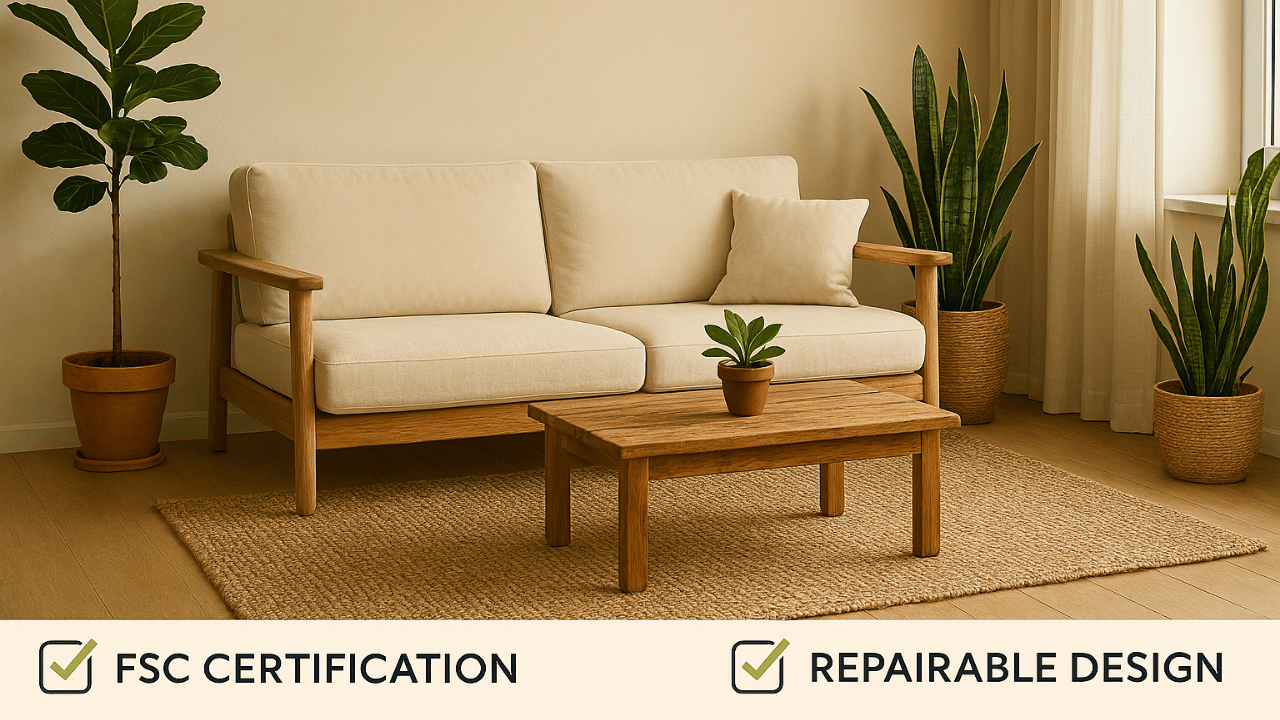
From reducing environmental impact to improving indoor air quality and promoting fair labor, the advantages of sustainable furniture are far-reaching. Heaven & Homes is dedicated to offering a curated selection of high-quality, eco-conscious furniture that aligns with these values, helping you create a beautiful, healthy, and sustainable living space.
Embrace the future of furniture by choosing pieces that are not only stylish and comfortable but also contribute to a greener, more responsible world.
Frequently Asked Questions
Sustainable furniture is designed, produced, and distributed with minimal environmental impact. It uses eco-friendly materials, ethical manufacturing practices, and is built to last, often supporting repair, reuse, and recycling.
Look for furniture made from recycled or reclaimed wood, upcycled materials, or low-VOC finishes. Modular furniture that can be repaired or reused also helps the environment. Brands with FSC certification or eco-friendly labels are good choices.
Space-saving furniture is perfect for UK apartments. Examples include sofa beds, extendable dining tables, beds with storage drawers, foldable chairs, and modular shelves. These designs save space without losing style.
Smart furniture has built-in technology. In 2025, modern furniture may include wireless phone charging, LED lighting, adjustable desks, temperature-controlled chairs, or audio speakers. It makes daily life easier and more comfortable.
Popular textures include soft fabrics like boucle and shearling, ribbed wood or metal, matte finishes, and natural stone accents. Mixing materials like wood, glass, and metal creates modern, stylish furniture.
Use statement furniture pieces in deep jewel tones like emerald, sapphire, or ruby. Pair them with neutral walls or floors to create a modern look without overwhelming your space.
Yes! Multi-functional furniture, space-saving designs, and biophilic elements work perfectly for compact homes. Even smart furniture and textural pieces can fit in small rooms when chosen carefully.
Combine trends by mixing sustainable materials with bold colors, adding smart features to multi-functional furniture, or pairing textured fabrics with natural wood. Balance is key to a stylish and practical modern home.
Both! Modern furniture trends in 2025 focus on style, comfort, and practical use. Space-saving, smart, and sustainable furniture are designed to look good while making life easier.
You can find modern furniture in UK stores and online retailers that focus on 2025 trends. Look for sustainable, multi-functional, and smart furniture. Brands like Heaven & Homes offer curated collections that combine style, quality, and eco-friendly design.

One thought on “A Detailed Guide to Sustainable Furniture Uk”
I’m impressed, I have to say. Really rarely do I encounter a weblog that’s each educative and entertaining, and let me inform you, you’ve hit the nail on the head. Your concept is outstanding; the difficulty is something that not sufficient people are talking intelligently about. I’m very glad that I stumbled across this in my seek for something relating to this.